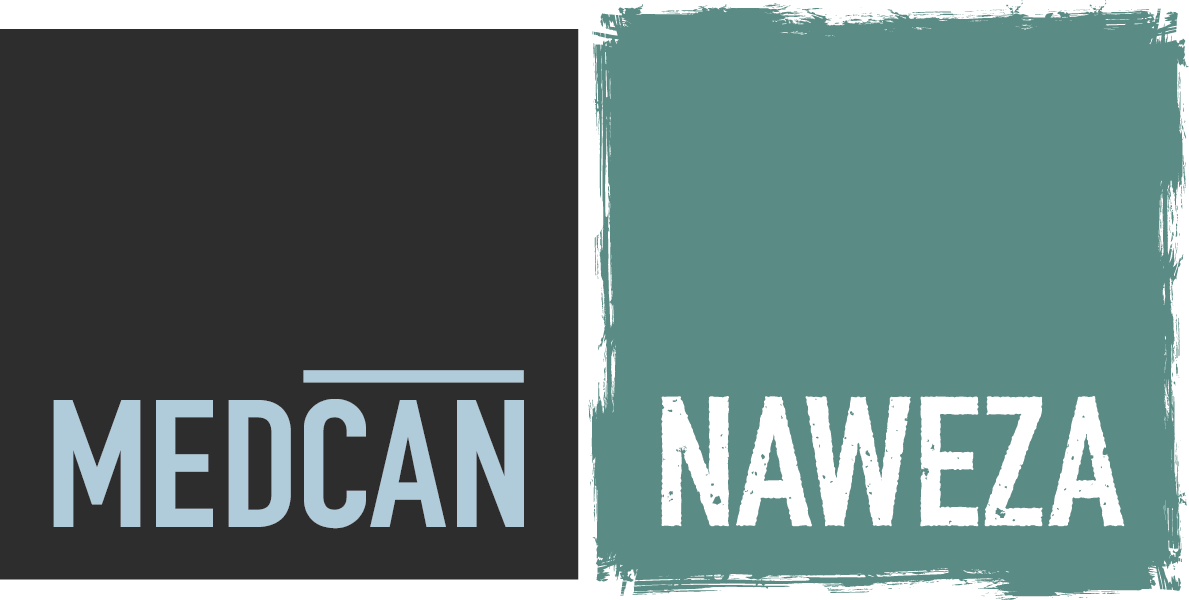On this trip to Kenya, many of the patients came in with complaints mirroring the sorts of things I see at my clinic in Toronto. Together with the local clinicians, we saw one case in particular that really highlighted some of the differences, and more surprisingly a few similarities that I wasn’t anticipating.
Dr. Tanya presenting during our Continuing Medical Education (CME) sessions
This patient was a soft spoken young woman who had come to the clinic to get an opinion about her fertility. She had been trying to conceive for almost a decade with no success. She had seen a doctor in another city who had ordered some testing, but in the end recommended IVF. She came hoping for another answer. IVF, though available in parts of Kenya, is prohibitively expensive. The cost is approximately 300,000 Kenyan shillings, which is the equivalent to about $3,000 USD. To put that into perspective, the gross national income per capita in Kenya is $1,380 USD per year.
As with any other patient, we began from first medical principles and collected a thorough history. We went through an extensive list of questions about her general and gynecologic/reproductive health. She was healthy otherwise and complained of no symptoms.
We also reviewed the results she had brought with her. She had done bloodwork which showed that some important hormones were functioning properly, which was reassuring. Her husband had done a semen analysis which was also normal. She also had several ultrasounds over a five year period, showing some signs of inflammation.
Though there are many causes of this, my immediate thought went to an infection, as this is a common reason for scarring which leads to infertility. When we probed further into these possibilities, she explained that she had previously been treated for some type of pelvic infection, but was unsure of the details.
After completing the history, we then proceeded to do an exam. She did have some findings that would be clinically consistent with possible scarring and possible infection. Unfortunately, due to our remote location, lab testing and imaging is extremely limited. After completing the exam, we returned to the clinic room to chat further.
We had a long discussion with the patient. With the resources available, we really had very limited options. We were able to offer basic counselling, education and a management plan going forward. We reviewed the basic recommendations for any patient trying to conceive, such as the importance of folic acid and timing for trials of conception. We talked about treating her and her husband for a possible infection to halt any potential future scarring. The hard truth was, the scarring that was already present was likely not easily reversible. We also suggested she revisit a fertility specialist to discuss IVF and other options that might be available including monitoring or surgery for the scarring. She was on board for all of the above and would follow up as needed.
This patient encounter highlighted a number of things for me. The first is the universality of many conditions, like infertility, even in the developing world. I was initially surprised by the fertility concern; It hadn’t occurred to me that I would be consulted on fertility issues while in Kenya.
Fertility concerns cross borders and oceans and cultures. This patient was just like any other patient I have ever seen for this issue, just halfway around the world. In a country where families are typically large, her fertility issues were all the more devastating.
The second is the shift in the manner in which we approached the case. In Toronto, I would have ordered some additional tests and imaging, and put in a referral for fertility. At Lewa (and likely in other primary care centres in Kenya), there is very limited testing available. I was forced to use a more pragmatic approach, using what I had at my disposal – the history, physical and the most likely diagnosis. I also focused predominantly on the practical things – folic acid, timing of trying, and treating empirically for possible untreated infection, with the possibility of more expensive referrals or other testing if needed.
The final thing of note was the importance of a therapeutic relationship with the patient. I could tell that it was not easy for her to open up about this very personal concern with me, a complete stranger from another continent who spoke a different language and was from a seemingly different world. After this very difficult encounter, we were chatting about her life, work and hobbies. She told me that she enjoyed listening to music and dancing. “So do I,” I replied. She looked up and made eye contact, smiling, I think in surprise. I do believe she did find some therapeutic benefit with coming to see us about her concern. Compassion and a listening ear are at times, all I have to offer. It doesn’t feel enough, but in some cases, it has to be.
Dr. Tanya Stone is a family medicine physician who joined us for her first Naweza trip in July 2018. She works in the Medcan Year Round Care clinic and also has a bustling private practice.


